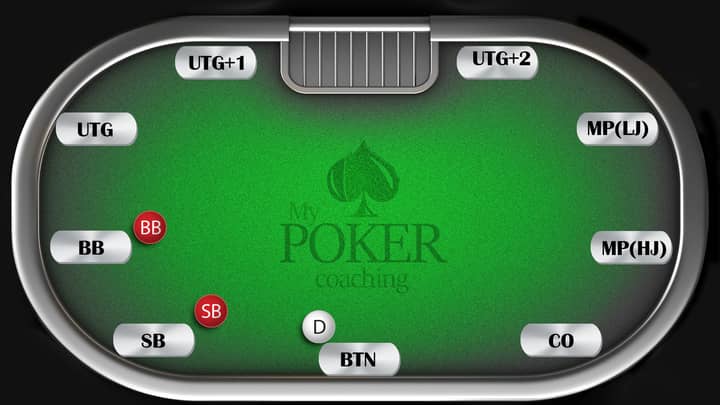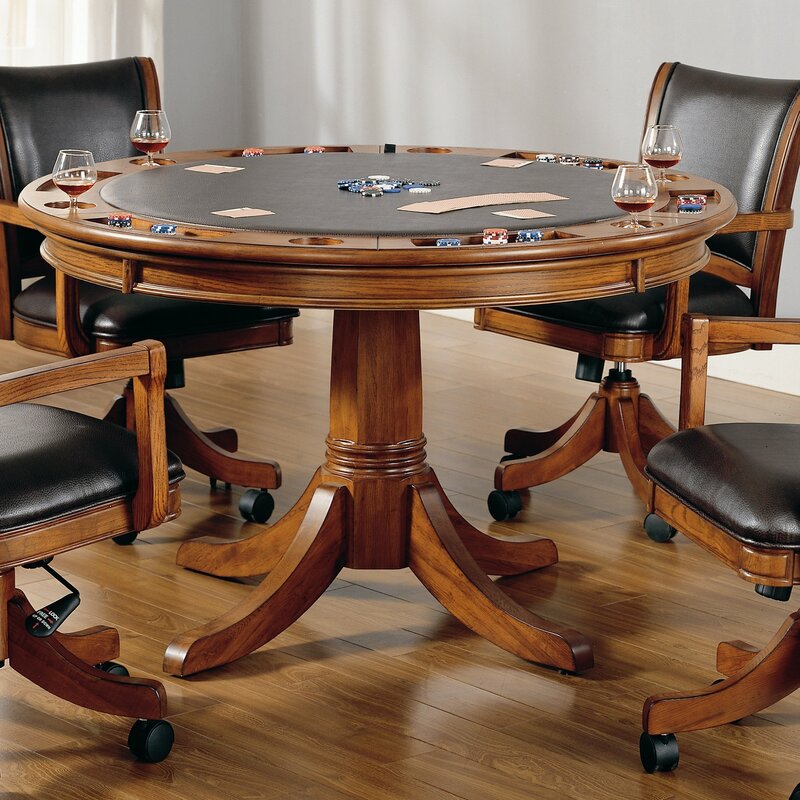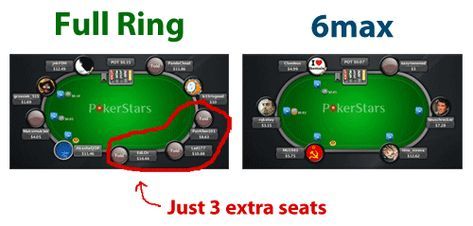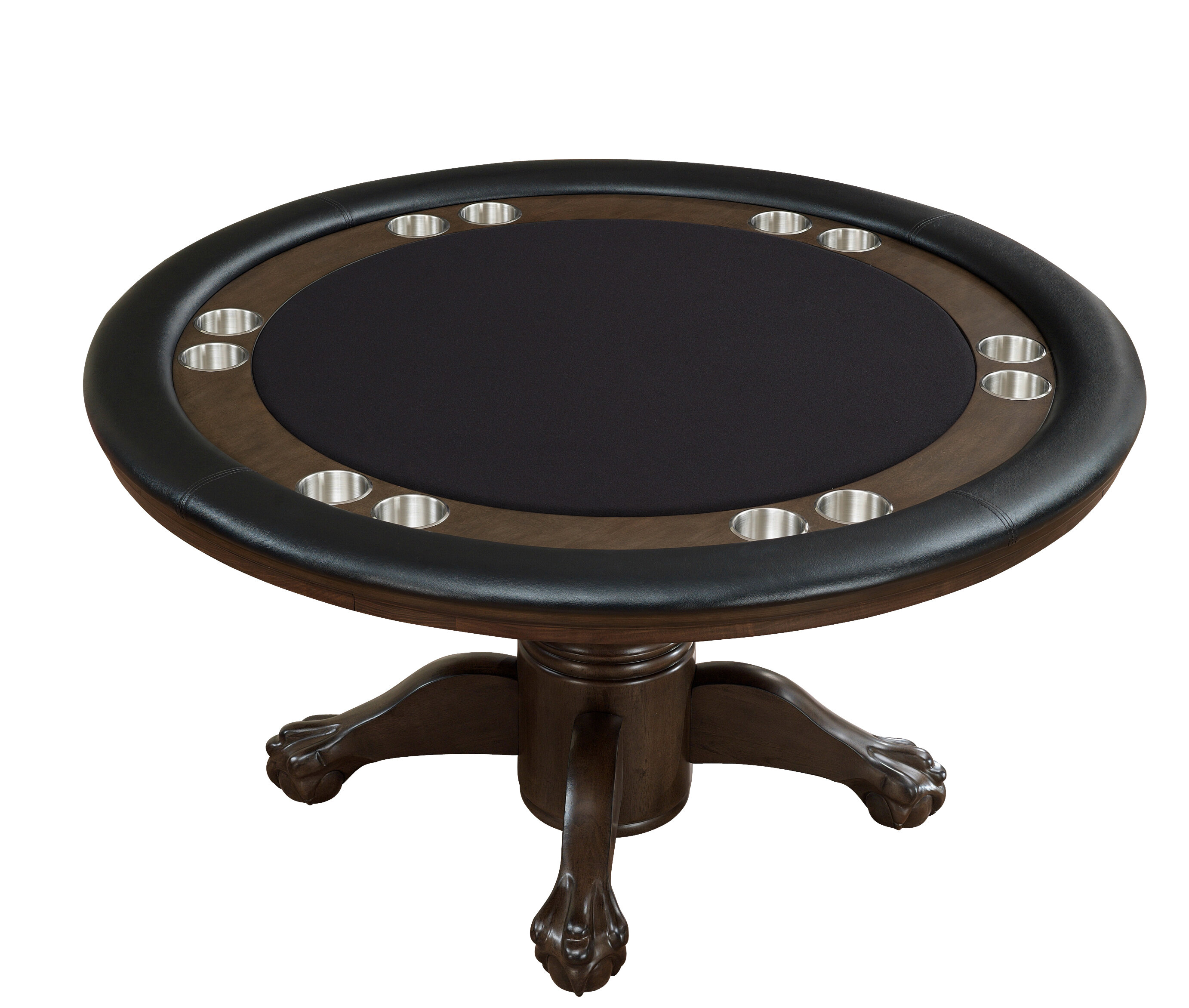6 Seat Poker Table
When choosing a poker table with chairs, start by deciding whether you’re going to have it always on display or store it away whenever you’re not using it. In the second case, looks will matter less and you can focus on portability and foldable models.

The dealer's choice of poker tables, ours offers high-style design and heritage craftsmanship. With a decidedly rustic appeal, it’s a statement piece in any room. Table is made of kiln-dried rubberwood. 3 feet table height. 2 feet chair seat height from floor. 1 foot distance from chair seat to table top. The following diagrams will vary slightly according to table shape. They are meant to be guidelines for space, distances and height. All examples below use square (4 people) or rectangle tables (6. Shop for kitchen tables 6 chairs online at Target. Choose from contactless Same Day Delivery, Drive Up and more. $500 – $800 $800 – $1000 $1000 – $1500 $1500 – $5000 Rectangle Round Square Oval 2 seats 3 seats 4 seats 6 seats. Convertible Round Poker & Dining Table with Convenient Storage, by RAM Game Room. Regular price $1,099.00 $949.00 On Sale. Convertible Round Counter Height Dining, Chess and Poker Table Set.
Be realistic when it comes to the number of players, too: if you only ever play poker with another friend or three, a space-saving poker table for four will do; however, if you want to host big poker games and space isn’t a problem, you can find larger and more majestic models. A good compromise is to look for a smaller but expandable table.
Either way, you need a felt surface that’s high-quality and smooth enough to deal the cards easily and without flipping accidents.
You also want comfortable chairs with padding and where you can see yourself sitting for hours.
Finally, don’t forget about its design! Try and look for a poker table with chairs that match your room’s décor, whether that’s your living room or game room. You can do so by scouting for a similar finish and material or even a felt top in a color that complements your palette.
6 Seat Poker Table Seat

Position at poker table is a significantly underestimated factor by many novice poker players. Your position at the poker table may (and will) have a significant impact on your wins/losses with the same starting hand. How well will you use this factor in your game will determine how profitable your poker sessions will be.
Before starting to play with any starting hand in Texas Holdem, you should always be aware of your position relative to the dealer (dealer’s position oftentimes called “button”). Below you can find basic poker table position names:
- Closest positions immediately to the left of the button are called early positions (abbreviated as EP).
- Closest positions immediately to the right of the button are called late positions (abbreviated as LP).
- Positions in between the early and late positions are called middle positions (abbreviated as MP).
A graphical representation of the positions at the poker table for the full tables (9-max, Full ring)
- Positions colored in red are early positions. At the full tables (usually this tables are used for poker tournaments) there are three early positions. In poker terminology they are commonly called UTG (an abbreviation from Under the Gun). Individually they are classified as UTG-1 (early position at the poker table that is closest to blinds), UTG-2 (early position following the position of UTG-1) and UTG-3 (position following the UTG-2);
- Positions colored in blue are middle positions. At the full tables there are three middle positions. They are called MP-1, MP-2, MP-3 and are arranged in the same order one after another. The common name for all middle positions is MP;
- Positions colored in green are late positions. These are the best positions to play at the poker tables. There are only 2 (two) late positions in the game and they have different names. The first late position is cut-off (CO) (this is a position located immediately after the middle positions). The last late position is the position of dealer (BTN - button);
- Positions colored in yellow are the blinds (small blind and big blind). These are one the worst positions at the poker table.
A graphical representation of the positions at the poker table for the short tables (6-max, Shorthaned)
- Positions colored in red are early positions. At the short tables (6-max) there is only one such position called UTG;
- Positions colored in blue are middle positions. There is also only one middle position at the short tables. It is called MP;
- Positions colored in green are late positions. There are two late positions at the 6-max tables. They are called dealers positions and cut-off;
- Positions colored in yellow are blinds. There are two blinds positions at the short tables. These positions are called small blind and big blind;

You will win a lot more money in late positions in poker, than in early ones. Button (dealer’s position) - is the most profitable position at the poker table.
Explanation of position abbreviations (UTG, MP, BTN, etc.)
UTG (abbreviation from Under The Gun). This is the name for early positions in poker. UTG position is a seat to the left of big blind. A player sitting on the UTG position is the first to act on preflop.
MP - a term used to define middle positions at the poker tables, i.e. positions in between the early and late positions. At the 6-max tables this is a position to the left of UTG.
CO (abbreviation from CutOff) - a position exactly before the dealer’s seat. This position is considered the second strongest position after the dealer.
BTN (abbreviation from Button) - the strongest position at the poker tables. A player sitting at this position will act last in every betting round.
SB (abbreviation from Small Blind). A player sitting on this position will act penultimate at preflop and first at all the other betting rounds during a hand.
BB (abbreviation from Big Blind). This is a position of a player sitting exactly after the small blind. The player sitting on the big blind will act last at the preflop and second in all the other betting rounds during the hand.
You should grasp the basic idea of playing on the blinds, which is that you will act last only on preflop. In all the other remaining betting rounds you will act first, which you should avoid.
Positions at the poker table
Early positions at the poker table
Positions colored in red (look at the pictures above) are early positions. These positions are considered less preferred for the game, because sitting on one of the early positions you will, most likely, act first postflop. That means that in early position you will have to be more selective to your starting hands, as you will have less information about the hand strength of your opponents (because you will act before them). Thus, in early positions you will need to pay more attention to your starting cards.
Middle positions at the poker table
Positions colored in blue are middle positions. Players sitting in the middle positions possess a “positional advantage” over players sitting in early positions. At the same time players sitting in late positions have a “positional advantage” over players sitting in middle positions.
That means, that you will be able to play with a little more starting hands on this positions (i.e. on middle and late positions), because less opponents will be acting after you. However, if all opponents on early positions will fold their cards, this will mean that you will act first in every following betting round. So keep this in mind when you will make a decision to play or not to play with that or another starting hand.
Late positions at the poker table
Positions colored in green are late positions. In fact, these are the best seats at the poker table. When you are in the late position, there is a high chance that you will act last in every betting round. In these positions you can play with a wide range of starting hands. But that doesn’t mean that you will need to play with the weakest hands, such as .
Dealer’s position (Button)

Dealer’s position is the best position at the poker table to play your pocket cards from, because sitting in this position you will always (excluding preflop) act last in every betting round. That’s why you should try to play the biggest amount of your hands from the dealer’s position, because you will have a positional advantage over your opponents, and position in poker is everything!
Cut-off
What is the cutoff position in poker?
Cut-off is a position exactly before the dealer’s position. Cut-off is the second best position at the poker table to play your starting hands from after the dealer’s position, because if an opponent on the button will decide not to participate in a hand, you will act the last in all betting rounds. Cut-off and button are the perfect positions for stealing the blinds, because not a lot of opponents will act after you, and the chance they will have a good enough hand to call your bet will be low.
Blinds
Small blind
Small blind is the worst position in poker, because sitting in that position you will act first in all the betting rounds excluding preflop (on the preflop small blind is acting penultimate). The key moment for playing from that position is the strength of your hand. You should play only your strongest hands from that position.
Big blind
Big blind is a position right after the small blind. This position is also one of the worst for playing your pocket cards from.
The advantage of position in poker
If you are in position to your opponents, you will have a few significant advantages:
- You will be able to play more starting hands on preflop
- You will be able to steal blinds
- You will be able to use pot-control
- You will save money, because you will possess information about your opponents actions on all streets and make your decisions based on the information you have. At the same time, out of position players will act blindly
- You will possess information about the amount of active players in hand, their types, as well as their action on all streets
- You will be able to evaluate the relative strength of your hand
- You will be able to win money on flop if an opponent/opponents will play check before you, showing you their weakness
- It’s much easier to bluff for players in the late positions
Statement: The positions is very important in poker

There’s no doubt. Let’s take a look at one example that shows the importance of position in poker. Let’s say we have on preflop:
In early position. It’s better to get rid of that hand because you don’t have any information about how your opponents will act, who are sitting in a later positions. Maybe you will have a chance to see the flop, but even in that case you will act first in the next betting rounds and you will have no clue what to do on such a board as .
In late position. You can decide either to play this hand or not based on your opponents actions in the earlier positions. If all players will fold their cards you’ll be able to make a raise and take the blinds. However, if your opponents were active on the preflop (made a raise, for instance), you will be able to get rid of your hand easily, without losing a penny.
Statement: It’s harder to bluff an opponent sitting in position towards us
And that’s absolutely true. It’s much harder to bluff out the opponent sitting in position towards us. Let’s take a look at an example:
6 max table. You are sitting on a dealer’s position with . Player on a middle position (MP) makes a raise and you decide to call. All other players fold their cards. The flop is . An opponent makes a continuation bet and you call. The turn card is dealt and now the board looks like . Now your opponent has a tough task to solve, because if he doesn’t have a good made hand (top pair or better), than he can only win this hand by bluffing. But he doesn’t know anything about the strength of your hand, since you can easily have in your hand and you will not fold it. So if he will continue to play aggressively, he will lose money. You have an advantage over your opponent: you are sitting in position towards him and acting last. Now if your opponent will decide to make a bet, you can assume that he has a strong hand and will easily get rid of your cards, and if your opponent will check you can make a bet yourself and take the pot.
How to use position at the poker table
If Player A makes his decisions at the poker table after Player B in every given hand, that means that Player A has a positional advantage over Player B. Simply said - Player A sits in position to Player B.
When in position, you can use information, obtained by watching your opponents actions before you: what actions did they performed, or what size of bets do they make - that’s what your decision will be based on. For example if you sitting in position to opponent and he makes a check that would more often mean his weakness. Thus, you will be able to use this information and make a bet, forcing an opponent to fold his cards.
The basic rule of positional play: At the poker tables, with all other things being equal, you will have an advantage over opponents sitting to the right from you (because you will be acting after them). At the same time, all players sitting to the left of you will have an advantage over you (because they will be acting after you). Hence the conclusion: the best positions to play your cards from are the late ones, because you will act last on postflop.
Positional awareness
You should try to play more hands in position than without it.
However, this statement does not mean that you will have to play every hand in a good position, or fold good hands sitting out of position just to balance things. In reality that means though, that you will have to be more inclined to play weaker hands in position, and fold the same hands (or even stronger ones), when you are out of position.
Let’s take a look at an example of playing KJo from different positions.
You should be playing this hand very carefully from an early position. This is one of the worst hands still falling into category of “good hands” and if you’re sitting out of position makes playing with this hand quite undesirable. This hand is not strong enough to neutralize the negative effect of your position.
In late position you can regularly make open raises with such a hand (if there was no raises before you). If you’re in a position to your opponents, you are also able to call their raises. This is a good situation, because besides the vantage position you have a decent starting hand.
It’s quite difficult to understand for beginners how the same hand can be played in late position, but can not be played in early. How can you learn how to define which hand can be played, and from what position?
6 Seat Poker Table Set
As they say “The appetite comes with the game”. This saying can also be used in our situation - you will need time to get an understanding, but the more you will play, the more experienced you will become, and you will have more understanding of the game and the opportunities to play with each starting hand from different position. But if you only started to play poker, you are advised to get into the hand only with premium cards not depending on a specific position at the poker table. And that would be considered absolutely normal, as you would need a playing experience to get a full understanding of playing process. Just be patient and ready to widen your range based on your position, in the process of sharpening your playing skills.
Advice. Constantly be aware of your position. In the early positions a good hand can become vulnerable, and you would be required to play it with caution.
A graph, showing an understanding of positional play
Below you can see an image showing all before mentioned - you should play more hands in position. This graph shows a VPIP of a winning player depending on a position in a 6-max games.
VPIP shows a percentage of voluntary put money into the pot (when he either raised or called raises preflop). In fact, this graph displays a % of played hands in each position.
Please note, that given player plays a lot more hands from late position if compared with early ones. He’s not playing same hands from all positions. He is not playing for a sake of good stats in Hold’em Manager, but tries to make good decisions in-game instead, based on his position at the table.
Conclusions about the positions at the poker tables
Position at the poker tables is one of the most underestimated factors among the beginners. The position determines the profitability of one or another starting hand. In position you can extract profit from almost any hand if you have sufficient playing experience.
The sooner you will start to pay attention to your position at the poker tables, the sooner you will start to win money.
You can also read our articles “Choosing your starting hands” and “Relative position in No-Limit Texas Hold’em”
Back to the Basics of No-Limit Texas Hold’em section.
Some material was taken from thepokerbank. You can also check out How to Play Poker Guide by Beasts of Poker.
Knowledge base's sections
The best about poker
- Five reasons why I've made money and continue doing this playing pokerThe psychology of poker
- The fundamental theorem of pokerPoker theorems
- The probabilities of getting specific starting hands on preflopPoker mathematics